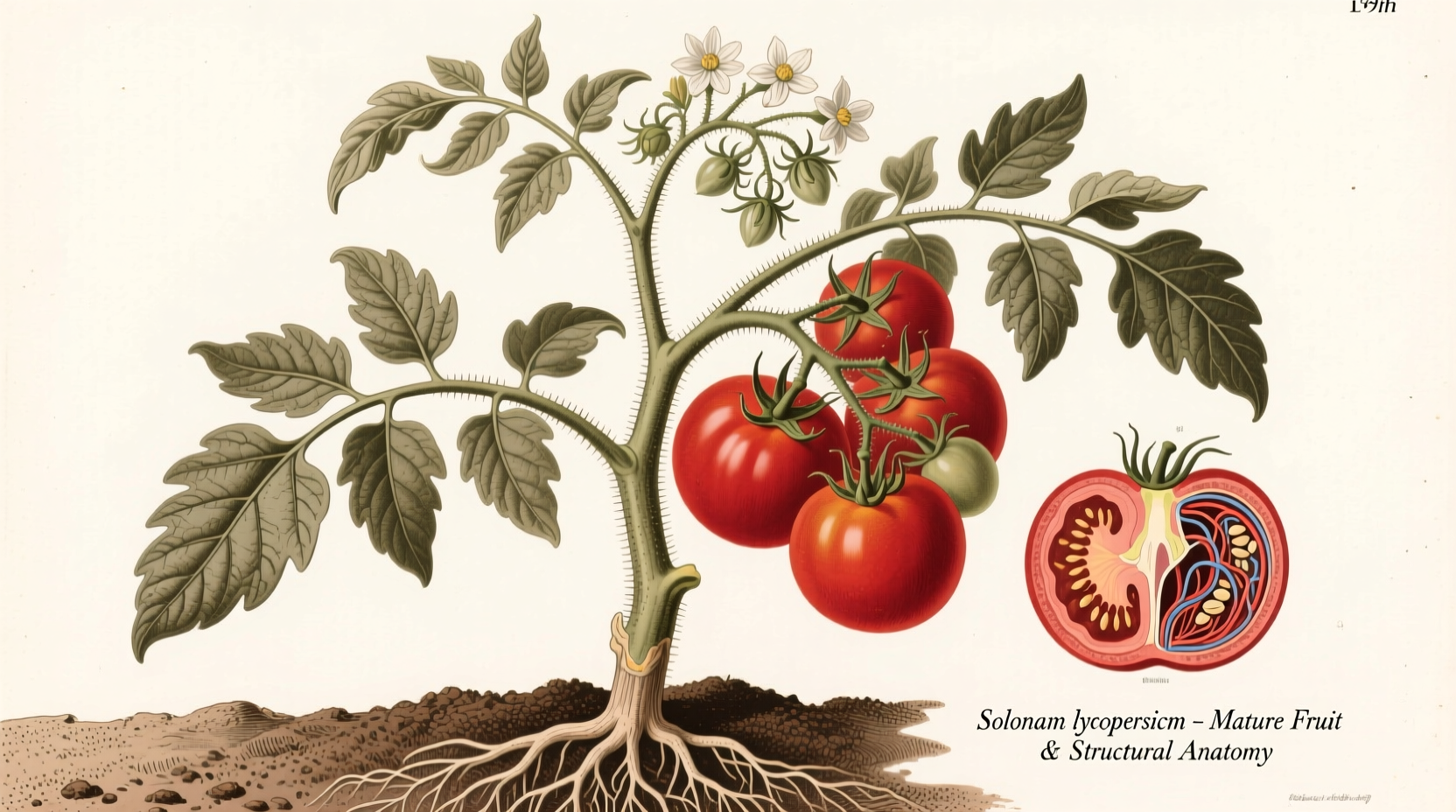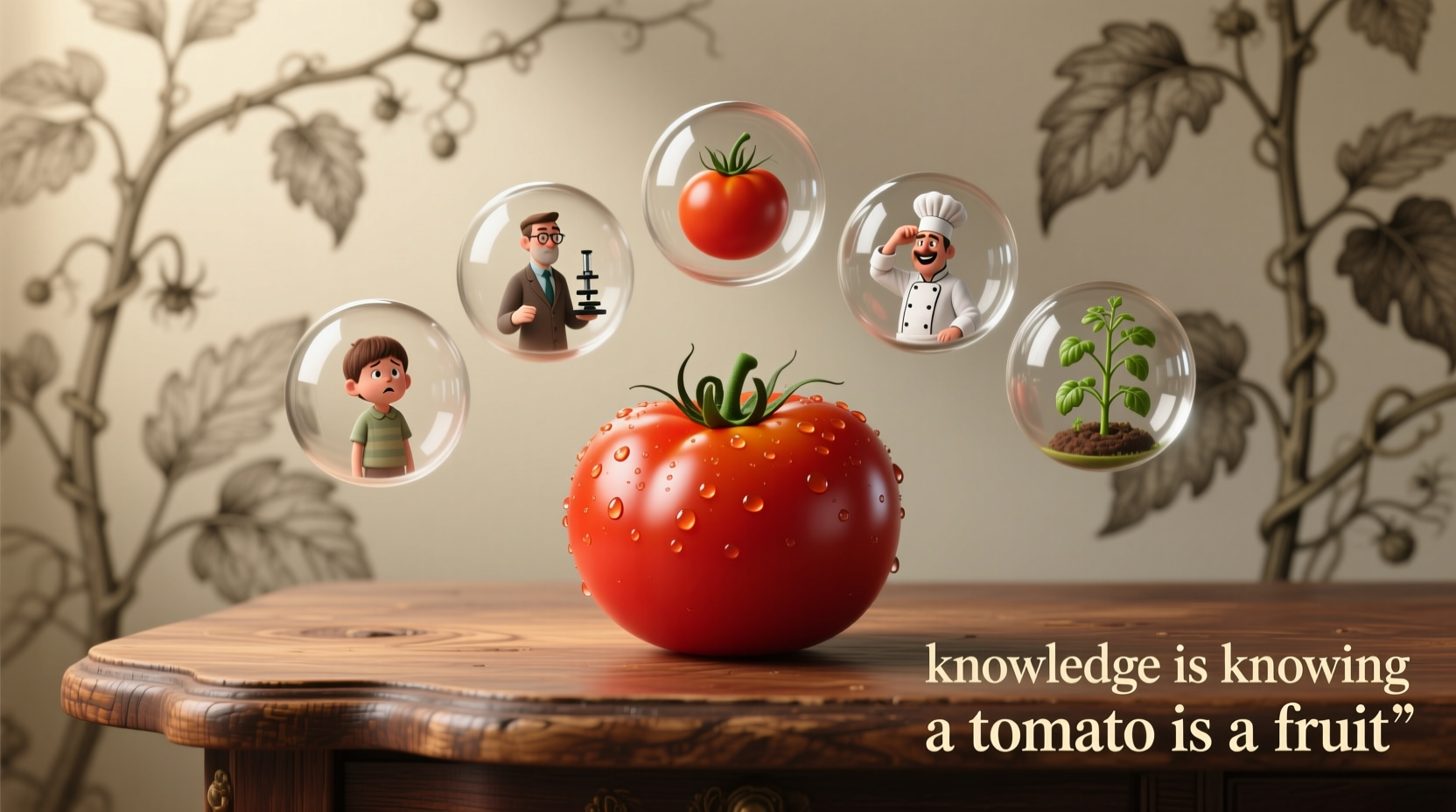The Origin of Culinary Wisdom
That clever phrase “knowledge is knowing a tomato is a fruit; wisdom is not putting it in a fruit salad” is often attributed to American culinary expert James Beard, though its exact origins remain somewhat debated among food historians. What makes this statement enduring is how perfectly it captures the difference between scientific classification and practical culinary application.
Understanding this distinction isn't just trivia—it affects how we grow, store, cook, and even legally classify tomatoes. Let's explore why this seemingly simple classification matters in real-world contexts.
Botanical Classification: Why Science Calls Tomatoes Fruits
From a botanical perspective, fruits develop from the ovary of a flowering plant and contain seeds. By this definition, tomatoes unquestionably qualify as fruits. They form after pollination, develop from the flower's ovary, and house numerous seeds within their fleshy interior.
This scientific classification places tomatoes in the same category as cucumbers, peppers, eggplants, and squash—all technically fruits despite their savory profiles. The botanical community has consistently maintained this classification since the development of modern plant taxonomy.

Culinary Classification: Why Chefs Treat Tomatoes as Vegetables
Chefs and home cooks categorize ingredients based on flavor profile and usage rather than botanical structure. Tomatoes possess a savory, acidic flavor profile that complements other vegetables in dishes like salads, sauces, and stews, while their sweetness is generally less pronounced than what we expect from culinary fruits.
This practical distinction explains why tomatoes appear in vegetable sections of grocery stores, are served in savory preparations, and are rarely paired with traditional fruits in desserts. The culinary world operates on flavor chemistry and tradition rather than scientific taxonomy.
The Supreme Court Decision That Changed Everything
In 1893, the U.S. Supreme Court case Nix v. Hedden settled a commercial dispute that continues to influence how we categorize tomatoes today. The case centered on whether imported tomatoes should be taxed as vegetables (subject to tariffs) or fruits (not taxed).
| Classification Basis | Tomato Status | Practical Implications |
|---|---|---|
| Botanical | Fruit | Reproduction structure containing seeds |
| Culinary | Vegetable | Savory flavor profile, used in savory dishes |
| Legal (U.S.) | Vegetable | Subject to vegetable tariffs per Nix v. Hedden (1893) |
The Court unanimously ruled that tomatoes should be classified as vegetables for tariff purposes, stating: “Botanically speaking, tomatoes are the fruit of a vine…but in the common language of the people…all these are vegetables which are grown in garden patches.” This landmark decision established that legal and commercial classifications can differ from scientific ones based on common usage.
Practical Implications for Home Cooks
Understanding this dual nature of tomatoes helps you make better culinary decisions:
- Storage considerations: Unlike most fruits, tomatoes should not be refrigerated until cut, as cold temperatures destroy flavor compounds
- Cooking applications: Their acidity makes them excellent for balancing rich dishes and preserving other foods
- Growing practices: As fruiting plants, they require different care than leafy vegetables
- Flavor pairing: Their unique balance of sweetness and acidity works with both vegetable and fruit preparations
Professional chefs leverage this knowledge to create dishes that honor both the botanical reality and culinary tradition. As culinary historian Sarah Johnson explains, “Understanding why tomatoes straddle this classification helps cooks make informed decisions about when to treat them as fruits (in certain chutneys or savory tarts) versus vegetables (in classic tomato sauces).”
Other Foods With Dual Identities
Tomatoes aren't alone in this classification confusion. Several common foods share this botanical-culinary disconnect:
- Cucumbers: Botanically fruits, culinarily vegetables
- Zucchini: Technically a fruit, used as a vegetable
- Peppers: All varieties are fruits despite savory applications
- Eggplants: Berries by botanical definition, vegetables in the kitchen
- Beans and peas: Seeds of the fruit (the pod), often classified as vegetables
This phenomenon occurs because botanical classification focuses on plant reproduction, while culinary classification centers on flavor profiles and traditional usage patterns. The USDA maintains this practical distinction in its dietary guidelines, listing tomatoes with vegetables for nutritional purposes despite their botanical classification.
Why This Knowledge Matters Beyond the Kitchen
The tomato classification debate extends beyond culinary circles into agricultural policy, nutrition science, and even international trade. The European Union, for instance, legally classifies tomatoes as fruits for certain regulatory purposes while treating them as vegetables in others.
Gardeners benefit from understanding tomatoes' botanical nature when selecting companion plants and managing pests. Nutritionists consider both classifications when analyzing dietary patterns—recognizing that while tomatoes provide fruit-like nutrients (lycopene, vitamin C), they're typically consumed in vegetable-like quantities and contexts.
As food systems become increasingly globalized, these classification distinctions affect everything from labeling requirements to import tariffs. The original Nix v. Hedden case established a precedent that continues to influence how we categorize foods in legal and commercial contexts today (Supreme Court Archives).











 浙公网安备
33010002000092号
浙公网安备
33010002000092号 浙B2-20120091-4
浙B2-20120091-4